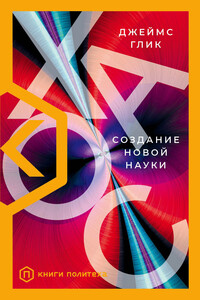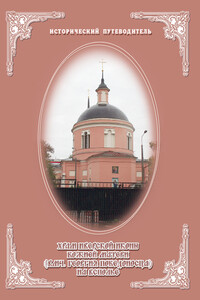—. 1986. Inward Bound. Oxford: Oxford University Press.
—. 1991. Niels Bohr’s Times, in Physics, Philosophy, and Polity. Oxford: Oxford University Press.
Park, David. 1988. The How and the Why. Princeton: Princeton University Press.
Peierls, Rudolf. 1985. Bird of Passage. Princeton: Princeton University Press.
Perutz, Max. 1989. Is Science Necessary? Oxford: Oxford University Press.
Pickering, Andrew. 1984. Constructing Quarks: A Sociological History of Particle Physics. Edinburgh: Edinburgh University Press.
Polkinghorne, John C. 1980. Models of High Energy Processes. Cambridge: Cambridge University Press.
—. 1989. Rochester Roundabout: The Story of High Energy Physics. New York: W. H. Freeman.
—. 1990. “Chaos and Cosmos: A Theological Approach.” Talk at Nobel Symposium, St. Peter, Minn.
Pollard, Ernest C. 1982. Radiation: One Story of the MIT Radiation Laboratory. Durham, N.C.: Woodbum Press.
Popper, Karl. 1958. The Logic of Scientific Discovery. London: Hutchinson.
Presidential Commission on the Space Shuttle Challenger Accident. 1986. Report of the Presidential Commission on the Space Shuttle Challenger Accident. Washington, D.C.
Princeton University. 1946. The Future of Nuclear Science. Princeton University Bicentennial Conferences: Series I, Conference I. Princeton: Princeton University Press.
Putnam, Hilary. 1965. “A Philosopher Looks at Quantum Mechanics.” In Colodny 1965, 75.
Quine, W. V. 1969. Ontological Relativity. New York: Columbia University Press.
—. 1987. Quiddities: An Intermittently Philosophical Dictionary. Cambridge, Mass.: Belknap Press.
Rabi, Isidor Isaac. 1970. Science: The Center of Culture. New York: World.
Regis, Ed. 1987. Who Got Einstein’s Office? Eccentricity and Genius at the Institute for Advanced Study. Reading, Mass.: Addison Wesley.
—. 1990. Great Mambo Chicken and the Transhuman Condition. Reading, Mass.: Addison-Wesley.
Reichenbach, Hans. 1956. The Direction of Time. Berkeley: University of California Press.
Reid, Hiram Alvin. 1895. History of Pasadena. Pasadena: Pasadena History Company.
Reid, R. W. 1969. Tongues of Conscience: Weapons Research and the Scientists’ Dilemma. New York: Walker and Company.
Reid, T. R. 1984. The Chip: How Two Americans Invented the Microchip and Launched a Revolution. New York: Simon and Schuster.
Reingold, Nathan, and Reingold, Ida H., eds. 1981. Science in America: A Documentary History 1900–1919. Chicago: University of Chicago Press.
Rhodes, Richard. 1987. The Making of the Atomic Bomb. New York: Simon and Schuster.
Rigden, John S. 1987. Rabi: Scientist and Citizen. New York: Basic Books.
Riordan, Michael. 1987. The Hunting of the Quark. New York: Simon and Schuster.
Root-Bernstein, Robert Scott. 1989. Discovering: Inventing and Solving Problems at the Frontiers of Scientific Knowledge. Cambridge, Mass.: Harvard University Press.
Sakharov, Andrei. 1990. Memoirs. Translated by Richard Lourie. New York: Knopf.
Salam, Abdus, and Strathdee, J. 1972. “The Path-Integral Quantization of Gravity.” In Aspects of Quantum Theory. Edited by Abdus Salam and E. P. Wigner. Cambridge: Cambridge University Press.
Sanchez, George I. 1961. Arithmetic in Maya.
Scheid, Ann. 1986. Pasadena: Crown of the Valley. Northridge, Calif.: Windsor.
Schlossberg, David. 1988. Tuberculosis. Second edition. New York: Springer-Verlag.
Schrödinger, Erwin. 1967. What Is Life? Cambridge: Cambridge University Press.
Schucking, Engelbert L. 1990. “Views from a Distant Past.” In General Relativity and Gravitation 1989. Edited by Neil Ashby. Cambridge: Cambridge University Press.
Schwartz, Joseph. 1992. The Creative Moment: How Science Made Itself Alien to Modern Culture. New York: HarperCollins.
Schweber, Silvan S. 1983. “A Short History of Shelter Island I.” In Jackiw et al. 1983, 301.
—. 1986a. “Feynman and the Visualization of Space-Time Processes.” Reviews of Modern Physics, 58:449.
—. 1986b. “The Empiricist Temper Regnant: Theoretical Physics in the United States 1920–1950.” Historical Studies in the Physical and Biological Sciences





